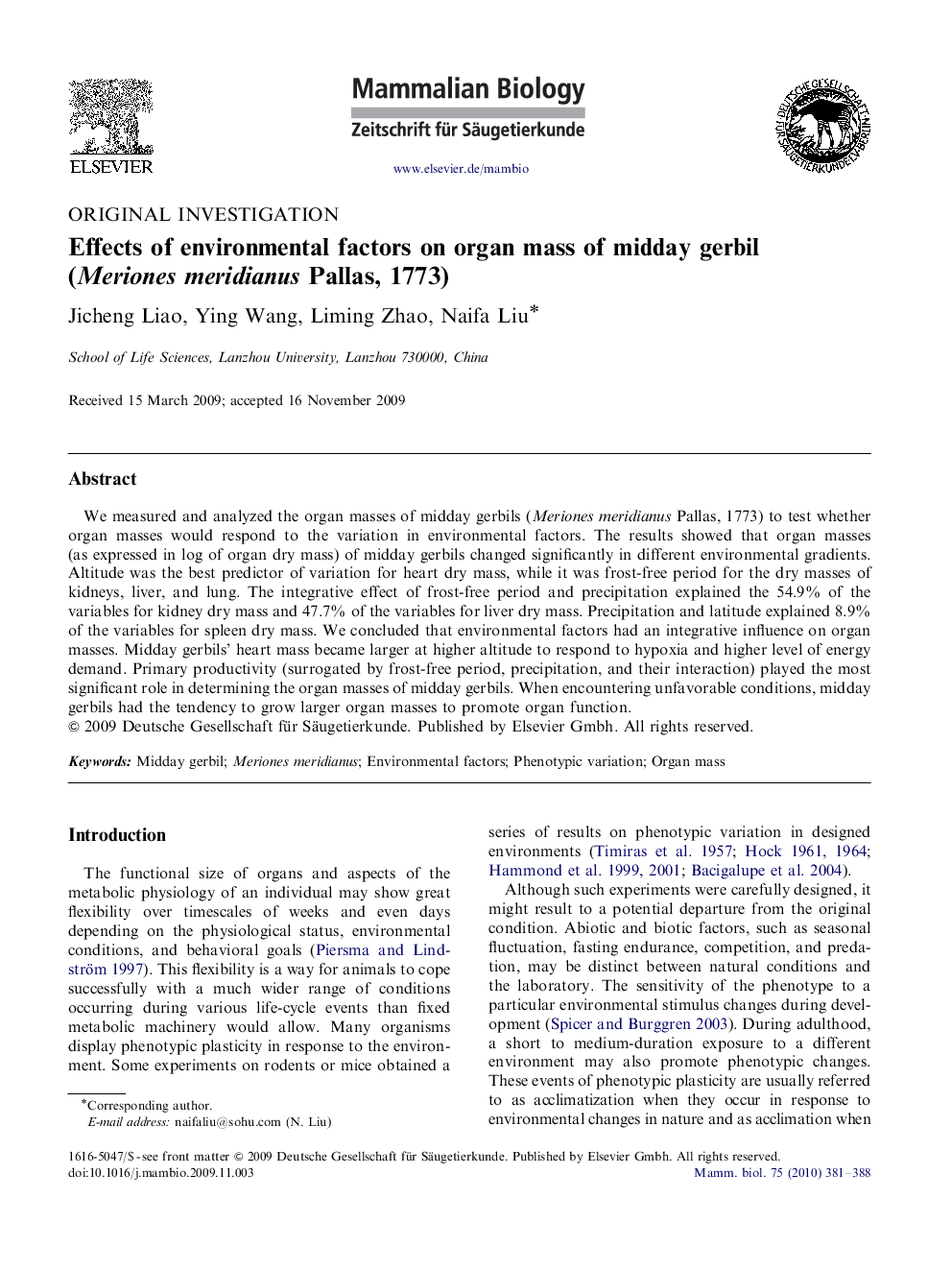| Article ID | Journal | Published Year | Pages | File Type |
|---|---|---|---|---|
| 2194203 | Mammalian Biology - Zeitschrift für Säugetierkunde | 2010 | 8 Pages |
We measured and analyzed the organ masses of midday gerbils (Meriones meridianus Pallas, 1773) to test whether organ masses would respond to the variation in environmental factors. The results showed that organ masses (as expressed in log of organ dry mass) of midday gerbils changed significantly in different environmental gradients. Altitude was the best predictor of variation for heart dry mass, while it was frost-free period for the dry masses of kidneys, liver, and lung. The integrative effect of frost-free period and precipitation explained the 54.9% of the variables for kidney dry mass and 47.7% of the variables for liver dry mass. Precipitation and latitude explained 8.9% of the variables for spleen dry mass. We concluded that environmental factors had an integrative influence on organ masses. Midday gerbils’ heart mass became larger at higher altitude to respond to hypoxia and higher level of energy demand. Primary productivity (surrogated by frost-free period, precipitation, and their interaction) played the most significant role in determining the organ masses of midday gerbils. When encountering unfavorable conditions, midday gerbils had the tendency to grow larger organ masses to promote organ function.
